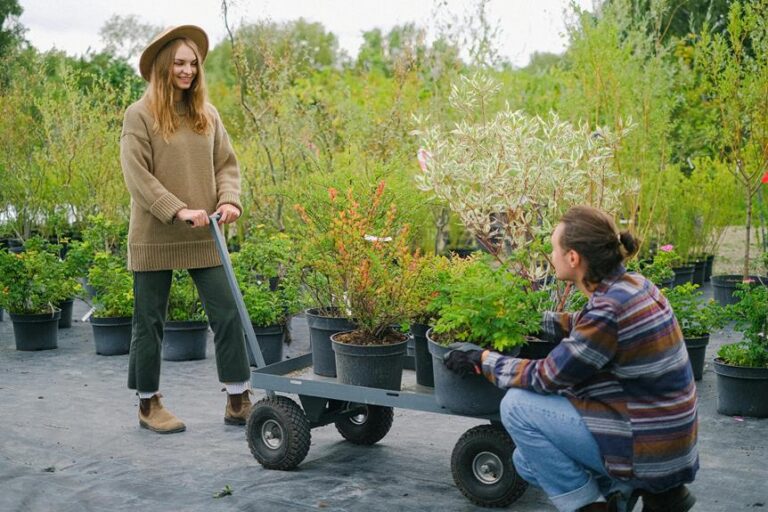What Is the Best Organic Pest Control for Gardens?
In the gentle battle against garden visitors who overstay their welcome, you’re not alone in seeking a more natural approach to pest control. As part of a community that values harmony with nature, you understand that the best organic pest control solutions protect both your plants and the environment.
By embracing strategies like floating row covers, you create a physical barrier that invites beneficial insects while keeping the hungry ones at bay. When you choose to handpick pests, you’re taking a direct, yet mindful role in maintaining balance. And when you apply treatments like insecticidal soaps or neem oil, you’re using nature’s own recipes to safeguard your garden’s health.
Remember, the key lies in identifying what works best for you and your green companions, fostering a thriving space where every plant and creature can find its rightful place.
Utilizing Floating Row Covers
Implement floating row covers in your garden to shield your plants from a broad array of pests while still allowing essential sunlight, air, and moisture to reach them. These covers are a cornerstone in organic pest control methods. They’re not just barriers against common garden pests like cabbage worms and aphids; they also protect against weather elements without blocking out the life-giving forces your green allies need.
By choosing floating row covers, you’re adopting control techniques that respect the ecosystem, promoting a sense of community in your garden by attracting beneficial insects. These allies work alongside your row covers to maintain a balanced environment, naturally curbing insect pests.
Embrace this gentle, effective approach to safeguard your plants, and you’ll cultivate a thriving, pest-resilient garden together.
Applying Insecticidal Soaps
After setting up your floating row covers, you’ll want to consider insecticidal soaps as another organic strategy to combat pests in your garden. These soaps effectively target soft-bodied insects like aphids and spider mites without harming beneficial insects when used correctly. To apply, simply dilute the concentrate with water as directed and spray it onto the leaves of affected plants.
Do this in the early morning or late in the day to avoid the peak sun hours. This timing prevents harm to plant parts and minimizes the impact on helpful pollinators. Steer clear of dishwashing liquids, which can be too harsh. Instead, opt for genuine insecticidal soap and apply it every five to seven days to maintain a pest-free sanctuary.
Neem Oil Treatments
Transitioning from insecticidal soaps, you’ll find that neem oil treatments offer a robust solution for tackling a wide range of garden pests. Here’s how to use neem oil effectively:
- Early Detection: Apply neem oil spray at the first sign of adult insects.
- Regular Application: Reapply every seven to 10 days for best results.
- Timing: Apply neem oil in the morning or late evening to avoid harming beneficial insects.
- Storage: Concentrates can be stored for future use.
Neem oil acts as a natural steroid, disrupting pests’ life cycles. It should be applied directly to the foliage but always test on a few leaves first.
You’re joining a community committed to organic gardening, embracing eco-conscious practices that protect the environment and ensure a healthy, thriving garden.
Introducing Beneficial Nematodes
You’ll often find that introducing beneficial nematodes into your garden soil is an exceptionally effective way to combat a variety of common pests. These microscopic allies offer multi-pest control, targeting the life cycle of unwanted guests by laying eggs that hatch into bacteria-releasing predators. They specifically target root maggots, cutworms, caterpillars, Japanese beetle larvae, and other grubs that are seen as slimy critters to your cherished plants.
To welcome these organic warriors, mix them with warm water and apply when the ground is about 60 degrees. Remember, thorough watering post-application ensures they travel deep into the soil, reaching those pests. For a sense of community in your garden, about 23 million nematodes per 1,000 square feet should do the trick.
Handpicking Garden Pests
Building on your garden’s defense with beneficial nematodes, it’s time to get hands-on by handpicking pests like slugs and Japanese beetles directly from your plants. This nontoxic to pets method is a tried-and-true tactic for maintaining the health of your garden. Here’s how to effectively manage those pesky invaders:
- Slugs and Snails: Look for these at night or early morning, and sprinkle iron phosphate baits as a safe alternative.
- Tomato Hornworms: Check your tomato plants regularly and remove these large caterpillars by hand.
- Japanese Beetles: Knock them into soapy water early in the morning when they’re less active.
- Corn Earworm and Leaf Miners: Use yellow sticky traps near your fruit trees and vegetable plants for monitoring and reducing their populations.
Conclusion
To keep your garden thriving and pest-free, it’s crucial to pick the right organic solution. Floating row covers and handpicking effectively target invaders directly.
For persistent bugs, insecticidal soaps and neem oil are your go-to treatments. Don’t overlook beneficial nematodes; they’re unseen heroes against soil pests.
Remember, the best defense is tailored to your garden’s unique challenges. Embrace these eco-friendly tactics for a healthy garden that supports the planet and your peace of mind.






